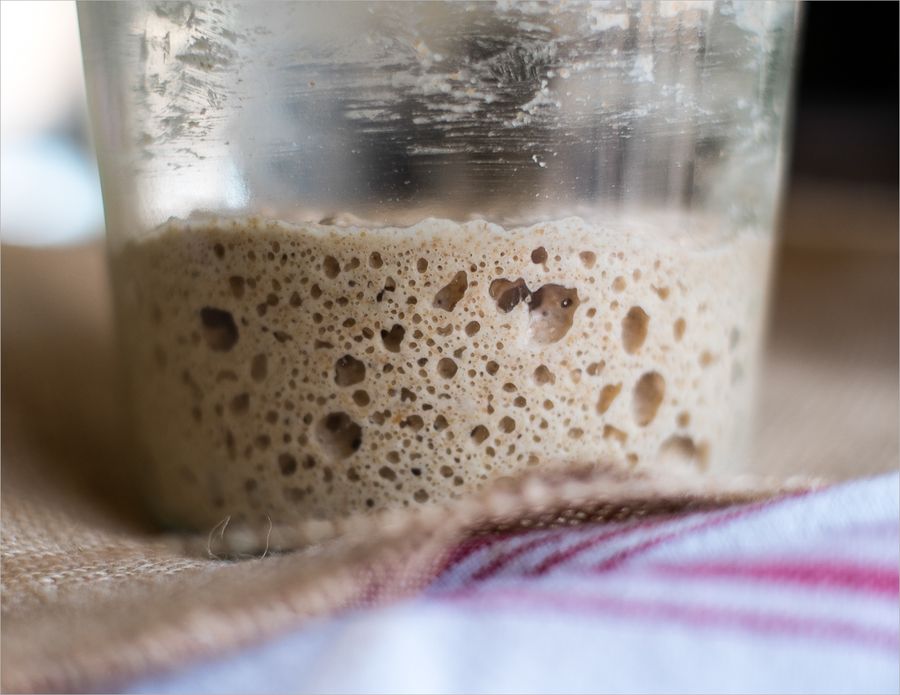So, even as I tried the sandwich bread out, I'd started on sourdough starter. This was actually my second shot - the first a long while back having failed miserably to really "take". Turns out the process is both very simple, but there are a few things that can help or hinder.
Take, for example, my insistence on using unbleached flour this time around.
I'll provide links to several videos and articles I found useful, but starting and maintianing a sourdough starter can really be boiled down to several core principles. Measures below assume you're doing 1-2 loaves at a time, needing 70-100g of starter each.
- While type of flour matters for flavor - rye vs all purpose vs bread flours will result in different starter flavors - if all you can get your hands on is all-purpose flour instead of bread or rye or other preferred flours, then use what you have.
- Use, at minimum, unbleached, and preferably, organic flour. This maximizes the amount of food the yeasts have to work with in your flour.
- Use dechlorinted water. Bottled, or tap / filtered tap water left open overnight (much like you would for aquariums) is good. Chlorine will kill and inhibit the yeast.
- It really helps to work by weight because volume of starter will be highly dependent on how much gas is trapped.
- The first week or so you will need to "feed" the started daily. Once it is active you can refrigerate it for a week between feedings.
- Measure your container's weight so that you know how much starter is in said container. A sealable - though generally you will only keep it loosely sealed - clear container is good.
- Start with 100g of flour and 100g of water. Thoroughly mix the flour and the water. Let it sit out, loosely covered, overnight. Temperature should be 70-75F.
- When you're just maintaining the starter, each feeding, dump all but 50-100g of starter. The critical part here is that you a) add equal parts of water and flour, and b) that you add as much as or more flour than starter, by weight. Equal parts starter, flour, and water seem to work best, especially when prepping starter for baking.
- Add the water first and thoroughly dissolve the starter to evenly and most efficiently use the flour you're feeding the yeast culture.
- Sometimes you can add a bit of honey or other sugars but I haven't found it necessary.
Both the sandwich bread I've made with the last recipe in AP and Whole Wheat blends, as well as the sourdough I've made, have been tasty, lasted at least a week in the fridge, and have been eaten without ill effect by several people who normally don't handle store-bought bread well.
An overview of sourdough bread and baking from King Arthur Flour, incuding starting and maintaining a starter. Note - the water pan trick isn't needed with some form of dutch overn to keep moisture trapped in.
Some of the people in the following videos are "characters" , or try to be. Nevertheless, these are some of the more informative ones I found that presented the information well:
Next stop - my recommended links/guides for the actual bread baking and my own observations/notes.

